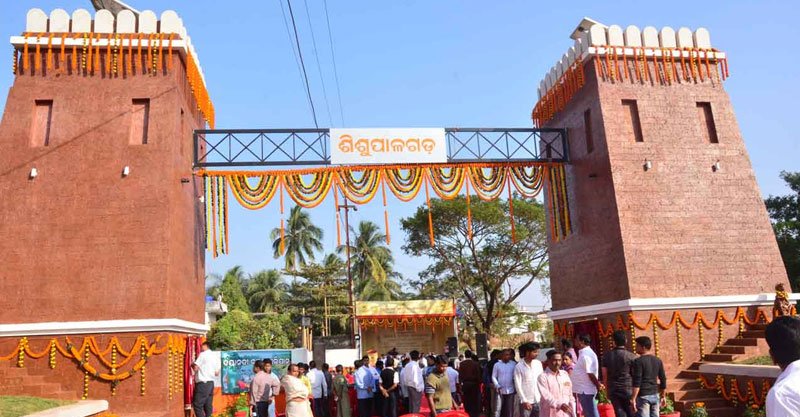
It is event from the ruins at Sisupalagarh, dating as far backs as the third and fourth century BC, that this is the site of Kalinganagar, the capital of the Chedi kings of the Mahameghavahana family. During this period Kalinga forsaken the souk of the Magadha rulers to became an independent Kingdom. The excavations highlight the fact that the city was primarily a military garrison, well – planned and fortified for adequate protection. Ramparts were erected on all sides; gateways as enter and exit points, regulated all movements. The ancient Gandhavati River, locally known as the Gangua river, flowed all around the ramparts, thus providing a perennial source of water to the dwellers of the city while serving as a natural moat-barrier to the enemy. The Udaygiri inscriptions records Karavellas extensive repair work here, after a devastating cyclone. Siupalgarh Mahotsav is organized every year by KAPOCH to refresh the glorious history of Odisha among Odias.
Sisupalgarh, the lost city is located in the vicinity of Bhubaneswar, once was the capital of Kalinga under the ancient Chedi dynasty which became prominence in India after the fall of Maurya Empire. During the reign of Mahameghavahana Samrat Kharavela (193 BCE–170 BCE) the Kalinga ascended to eminence andrestored the lost power and glory, which had been subdued since the devastating war with Emperor Ashoka. Under the leadership of Samrat Kharavela, the Kalinga army succeeded battles against their arch rival of Magadha, Anga, Satavahanas and made Kaḷinga a gigantic empire. After the defeat of Magadha, King Kharavela also returned the Jina statue which was taken away by Magadha Samrat Ashok after Kalinga war. Within a short span of period Kharavela could extend his boundary from the North-Western part of India to the farthest extend in the South.
The Sisupalgarh is the mute witness of such glorious history of Odisha. But unfortunately very little is known about this fort. Only during the year 1947-1948 the Archaeological Survey of India (ASI) excavated the site and the history of the fort was unfolded. The fort with more than 2000-year-old presently stands with some symbolic stone pillars and the remains of the quadratic defensive walls are as high as 12 metres tall speaks about the security systems of the edifice. So as to infuse the spirit of this glorious history of Odisha among the Odias, three days grand annual festival was organised at Dasahara Ground of Sisupalgarh village from 20th –22nd January, 2017 where traditional cultural attunes were showcased. Different artists having national and international repute performed their shows where more than seventy thousand viewers participated during the three days program. The programme was inaugurated by Sj. Dharmendra Pradhan, Member of Parliament. Amongst the guests and dignitaries Sj. Suresh Rautray, Sj. Husen Rabi Gandhi, Sj. Sameer Mohanty. Sj.Bhabani Charan Patnaik had attended the program during the three days period. In the beginning of the program, a laser show on Sisupalgarh was performed which touched the heart of all viewers present in the program. In the first day Chhau dance was performed by Mayur Dance Academy, followed by Prince Group dance on the title named India first. Then in the 2nd day, famous Odissi dance was performed by Ms. Dona Ganguly and team from Kolkata. Thereafter in the 3rd day, the attraction was the orchestra performed by famous Bollywood singer Abhijeet and team from Mumbai. The team performed songs pertaining to splendid glory of Odisa. On this occasion a souvenir named ‘Sisupalgarh; The Lost City’ was unveiled for pubic where more than 62 write ups were depicted by the well know writers of Odisha.
